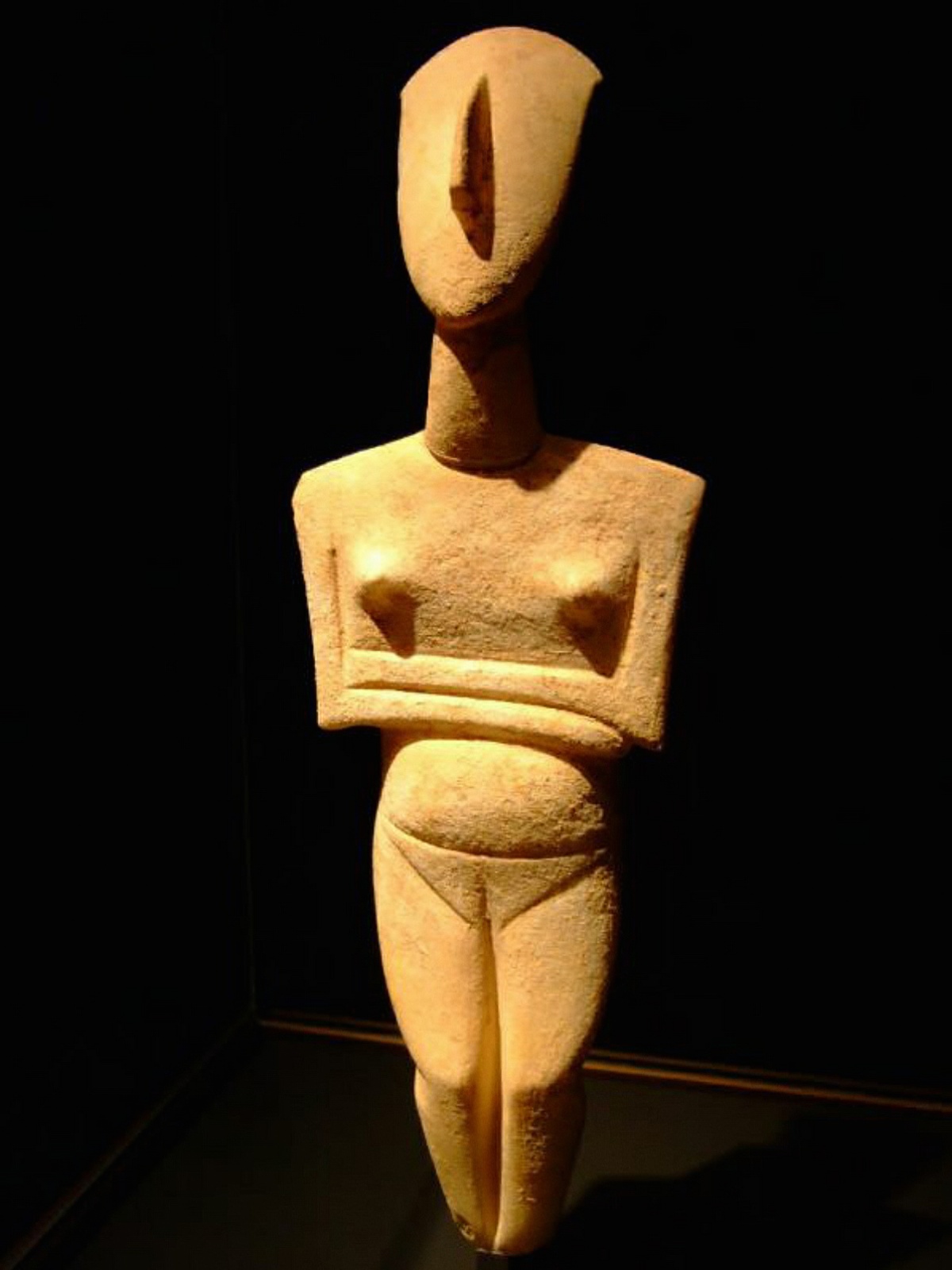Around the year 3,000 BC, seafarers from Asia Minor became the first people to settle on the Cyclades islands in the Aegean Sea. These islands are rich in natural resources such as gold, silver, copper, obsidian, and marble, which helped these early settlers achieve a certain level of prosperity.

This affluence allowed for a flourishing of the arts, and the distinctiveness of Cycladic art is probably best demonstrated by their clean-lined and minimalistic sculpture, which is among the most distinctive art produced throughout the Bronze Age in the Aegean.
These figurines were produced from 3,000 BC until around 2,000 BC when the islands became increasingly influenced by the Minoan civilization based on Crete.
These early immigrants most likely grew barley and wheat and fished for tuna and other fishes in the Aegean sea. Several of them have survived modern-day thievery and vandalism, but others, like those on the island of Keros, were deliberately demolished in ancient times.
Did the religious views of those who discovered them on Keros Island have anything to do with this kind of action? To the best of our knowledge, the people who lived in the Cyclades island group did not worship the Olympian gods when they were first introduced in the second millennium BC.
Was Keros, some 4,500 years ago, an important religious center of the mysterious Cycladic civilization? What was their true significance and purpose in Cycladic society? How important were, their mysterious flat figurines? As can be seen, there are quite a few intriguing questions that remain unanswered to date.
The Cycladic Culture refers to the ancestral Greek culture of the Cyclades islands of the southern Aegean Sea, including the Neolithic and Early Bronze ages. As previously noted, the Minoan civilization was part of the Cycladic culture. Between 3,200 BC and 2,000 BC, a remarkably advanced civilization flourished there, of which numerous important discoveries were made on these ancient islands.
Many strange artifacts inspired by this mysterious civilization have been discovered on the islands, but the so-called Cycladic figures were undoubtedly one of the most distinctive creations of this civilization. In their simplicity, their enigmatic forms have profound artistic power.
Now, researchers are looking into the answers to a number of significant questions about the mysterious history of the Cyclades islands. Most prominently one of those many intriguing questions are: Why did the Cycladic Culture produce the largest collection of Cycladic flat-faced marble sculptures?




